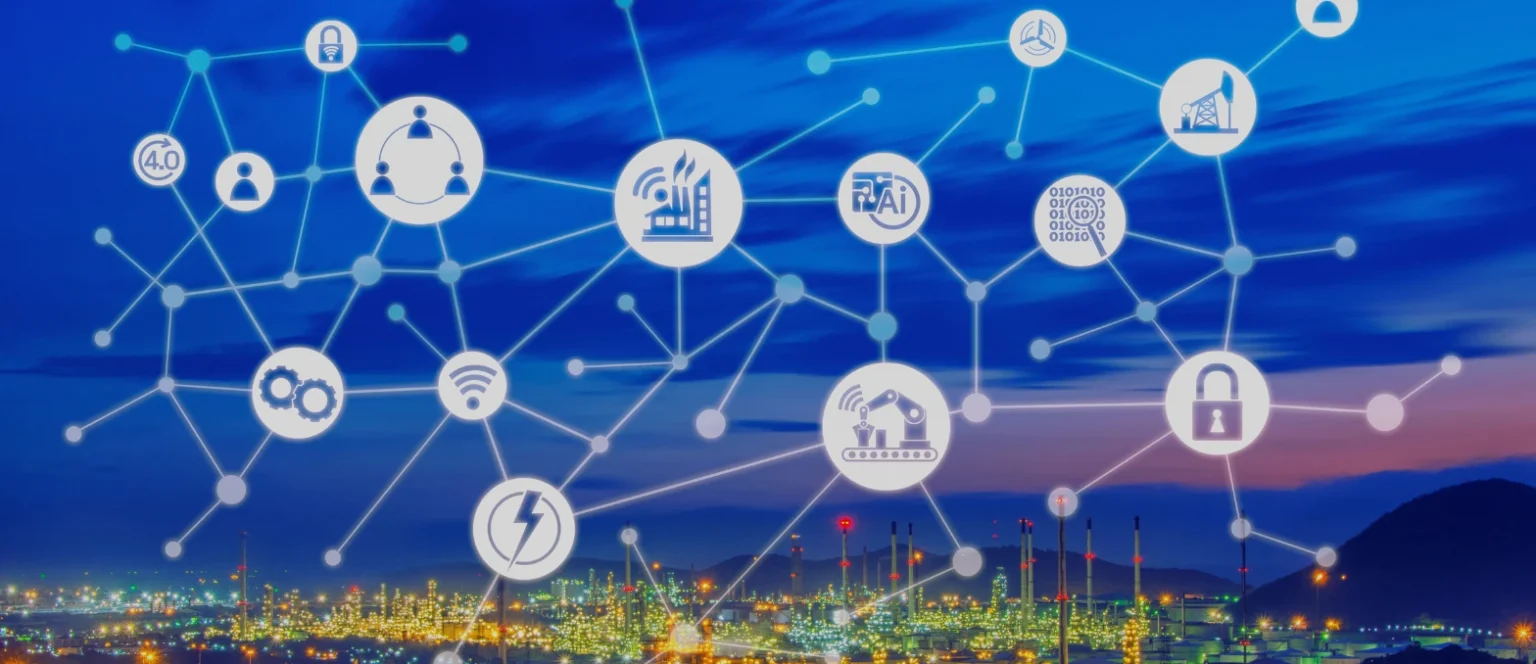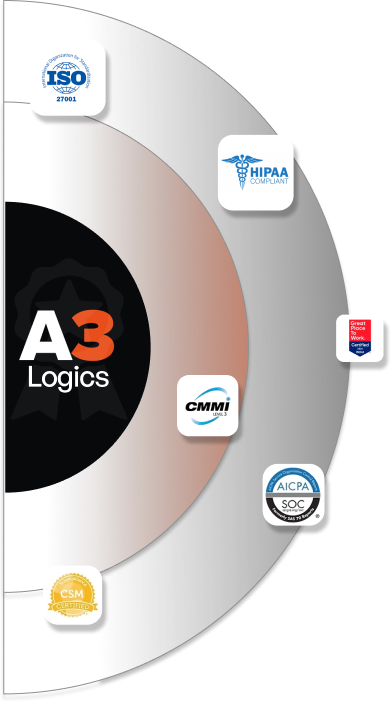The Internet of Things has created a revolution in the current lifestyle by changing every ordinary home into a smart house. Such IoT smart home applications provide convenience, energy savings, and high security, from voice-controlled lights to advanced security systems. However, since more people are becoming acquainted with smart home technology, there is an increase in the threats from cyberattacks, issues concerning the privacy of the data, and weaknesses in the systems.
It is all planned, using the appropriate technology stack, and has adhered to security best practices such that an experimenter is ready for becoming protective as well as feature-rich for IoT smart homes. They will find here everything that is related to IoT smart-home apps, from types to key elements, security measures, and industry trends. Whether you are a business interested in investing in smart home solutions or a developer seeking insights into building secure IoT apps, this guide will provide you everything about IoT in smart home apps.
Table of Contents
Market Stats
According to the study, it seems that in the upcoming years, IoT smart home applications will be in demand. Some of the important statistics that would matter in 2025 and beyond are given below:
- Fortune Business Insights estimates that the developing global smart home market will rake in $147.52 billion in revenues by 2025. It further anticipates a radial growth of $633.20 billion by 2032, driven by a 23.1% annual growth rate during this entire forecast period.
- In this same manner, smart home revenue in the United States shall be valued at $43.0 billion by 2025, with a CAGR (CAGR 2025-2029) of 8.25%, leading to a market volume of a projected $59.0 billion by 2029.
- Statista reflected the above-stated figures, indicating that smart home technologies would infiltrate 77.6% of homes in 2025 and projected to 92.5% in 2029.
- This is likely to increase in the smart home security market, which will increase from $33.32 billion in 2024 to $38.07 billion in 2025 at a cumulative annual growth rate of 14.3%.
What is a Smart Home App?
Generally referred to as IoT-based software, the app for smart homes allows the control and management of several smart devices and IoT gadgets within a home environment, all integrated by some centralized control. Such applications may usually connect various Internet of Things (IoT) devices with home automation systems related to different home appliances.
The purpose of developing an IoT app is to assist in conveniently and seamlessly monitoring, controlling, and managing several aspects of the home. In fact, advances the smart home concept of using technology that increases the convenience of larger aspects of home management while still adhering to energy-use constraints.
Latest Trends in IoT and Smart Home Technology
AI-Powered Smart Houses
AI empowers these houses with the ability to perceive user inclination and automatically adjust to the user’s settings. Today, advanced voice assistants also help control these houses, while AI-embedded security features like facial recognition enhance user safety.
Effortless Integration through Matter Protocol
Matter, a one-stop versatile smart home standard, makes all devices from brand-specific footprints work together to allow easy management and control of everything in one ecosystem.
Electronically Intelligent Devices
IoT brings smart devices that focus on energy monitoring in real-time and AI automation. Water or energy bills will be lesser because of smart thermostats, lighting, and even solar-powered devices.
5G Compatibility: Smart House Solutions.
5G enables smart home devices to work quicker and at a significantly lower latency, delivering real-time automation and control from a distance.
Better Smartness on the Security Systems
AI-surveillance cameras and smart locks have inbuilt facial recognition and motion detection, which can be further assessed by real-time notifications through mobile apps.
More Advanced Voice and Gesture Control
Finally, smart homes now take touchless gestures in collaboration with voice commands for switching on/off lights, TVs, and thermostats with just a wave of a hand.
Types of Smart Home Apps
There are few types of smart applications available for the home. Let’s check them out!
Centralized Smart Home Apps
The streaming platform thus controls various smart devices by multiple brands within a single interface for integrated lighting, security, and entertainment for a flawless automated home experience.
Device-Specific Apps
Specialized applications are available from professionals for smart devices like thermostats, locks, and cameras. Such applications always impart deep and superior customizations possible for the devices.
Security & Surveillance Apps
An app is intended for house safety; it connects to camera(s), motion sensor, and alarm system and offers options for transmitting live video, instant alerts, and monitoring anywhere on the go.
Energy Management Apps
These apps are used to monitor and optimize energy consumption through smart thermostats, light controls, and power meters; automatically saving costs and promoting an environmentally friendly lifestyle.
IoT Home Automation Platforms
In these platforms, several IoT devices can be connected while users can make their automation rule creations with AI assistants like Alexa, Google Assistant, and Apple HomeKit.
DIY & Open-Source Platforms
Home Assistant and OpenHAB are platforms intended for gold users, which do everything conceivable and exhaust all possible means, using neither proprietary software nor manufacture-specific control interfaces in their indoor settings.
Essential Features of an IoT Smart Home App
Device Compatibility and Integration
IHS Certified, these systems would enable an array of connectivity for their internal devices – Wi-Fi, Zigbee, Z-Wave, Matter – and would align all of them against brand compatibility for a complete smart home experience for the customer.
Remote Access and Control
Users access smart devices from anywhere using the mobile app or web interface. This effectively creates greater convenience, security, and real-time interaction with devices.
Voice Control
It performs hands-free control through integration with Alexa, Google Assistant, or even Siri. With efficient, simple vocal commands, one can turn on/off lights, temperature, or security.
Automation and Scheduling
A user can configure smart rules or schedules for lighting, temperature control, and security. Automates routine tasks very efficiently as per time, location, or sensor data input.
Real-time Alerts and Security
Send instant alerts in case of any security breach, malfunctioning devices, or environmental change. Data encryption and authentication conform to the standard for securing the privacy of users.
AI-Powered Insights
Making energy-saving recommendations as well as security optimizations based on the analysis of user behaviour. All possible efficiency of the smart home is promised through predictive analysis.
Energy Monitoring and Optimization
Monitor your energy usage and suggest ways in which you can save money. It will also assist in automating the settings to achieve energy-efficient and sustainable usage.
Guide for IoT Smart Home App Development
Goals & Needs Definition
Just check it to see if it’s home automation, security, or energy management, know who it’s for, and then do integration.
Highlight Unique Contents
Specific AI-based automated remote control and energy monitoring should be considered. The integration should be cloud-based and able to send real-time notifications to IoT devices.
Select Right Tech Stack
Pick an ideal technological front-end, such as Flutter or React Native. Select Node.js or Python as back-end technologies. For cloud services with scaling, one uses AWS IoT or Google Cloud.
User-Friendly UI/UX
Create an appealing and clean interface that has customizable dashboards with easy navigation to foster acceptance and experience at user levels.
Integration of IoT into Seamlessness
Smart home integration with devices uses Zigbee, Z-Wave, or even MQTT protocols. Voice control by using commands with Amazon Alexa and Google Assistant also adds to the improvement in automation.
Smart Automation and Control
Schedule events, predictive automation from AI, and remote access allow users to set unique parameters to meet their convenience and energy efficiency.
Security and Testing
Encrypt the data and also utilize multi-factor authentication for security, conduct penetration tests as well as tests for performance on the integration path.
Launch It and Perfect It
Leave it live and updated after app testing and release it in regular updates and customer support, as well as spur monitoring and improvement based on customer feedback.
Benefits of Smart Home Application Development
Convenience and Ease of Automation
Smart home applications take on repeated chores-from lights to everything regarding appliances and even security. Scheduled or on-demand action makes doing the daily routine chores for a few minutes convenient. Therefore, smart home management obligations have become smoother and stress-free.
Energy Efficiency and Savings
AI insights reduce the electricity consumption of smart thermostats or light controls for further sustainable living and cost efficiency on bills. The consumption of energy is being controlled by users to monitor everything in real-time, eventually leading to more efficiency.
Maximize Security and Protection
One can receive instant alerts right into their mobile devices, with features such as surveillance cameras, smart locks, and motion sensor devices. With received notifications, people are in a position to respond very quickly to any threat to security.
Total Access & Control Anywhere
Switching off the thermostat, unlocking doors, and checking the security camera can all be done on your phone from anywhere in the world. That’s the kind of flexibility that really makes “home sweet home” add itself to your ability to keep tabs on household items.
Smoother AI and Voice Assistant Integration
You can do it the easiest, fastest, and most interactive way without any hands-on contact that controls a smart device using Alexa, Google Assistant, and Siri. Indeed, it cuts down on voice command overload, hence making it an even better way to use smart homes.
Future-Proof and Scalable
Smart home apps keep growing with IoT, accommodating new devices on the market alongside piling up rich features in terms of updates. Therefore, homes would be up to date in technology without many revamps taking place.
Personalization in Automation
Users can create personalized schedules, geofencing, and AI routines according to their living styles, which would, therefore, add comfort for smart homes to get in tune with day-to-day habits.
Cost-Effective Home Management
Automation reduces energy waste and enables predictive maintenance, saving money on utility bills and repairs long term; definitely worth investing and budget-friendly for smart homes.
Choosing IoT Protocols and Standards for Smart Home Applications
Adopting IoT standards and protocols for smart home applications enables devices to be integrated without compromising communication, security, and scalability.
There are a lot of IoT protocols for connectivity that facilitate and ease connectivity between smart home devices and have different benefits as follows:
1. Wi-Fi:
- It is being deployed in applications that require high bandwidth-consuming activities, like streaming video and smart home devices using cloud services.
- It connects the devices impressively but consumes too much power, rendering it unsuitable for battery-operated devices.
2. Bluetooth and BLE
- Connects devices such as smart locks and wearables in short-range.
- BLE tends to use very little energy and is popular among mobile-connected smart home products.
3. Zigbee
- A low-power networking protocol optimally suited for smart lighting, sensors, and automation systems.
- Assures reliable and efficient communication between devices that operate on little power.
4. Z-Wave
- Somewhat similar to Zigbee, this protocol operates in a lower frequency range, which helps to mitigate interference from Wi-Fi networks.
- It provides high-level security encryption, which is often used in residential smart home security solutions.
5. Thread
- A low-power wireless, IP-based networking protocol intended for smart home automation.
- Offers better scalability and security, allowing devices to work independently without a central hub.
6. Matter (former Project CHIP)
- A new universal standard with backing from Apple, Google, Amazon, and the Zigbee Alliance.
- Ensures interoperability across brands and increases security.
How Do Different IoT Protocols Impact the Scalability and Security of a Smart Home Network?
The relevance of these protocols can be outlined in the following two terms:
1. Scalability
- Mesh Networking (Zigbee, Z-Wave, Thread) – These protocols enhance scalability by allowing devices to communicate with each other rather than depending upon one hub.
- Cloud-based Protocols (Wi-Fi, Matter) – Matter and Wi-Fi provide modes for remote connectivity; in contrast, they may find themselves in challenging situations, especially with congestion when a high number of devices are accessing the same networks.
- Bluetooth/BLE – Due to their limited range and connections for devices, Bluetooth and BLE are not designed for big smart home applications.
2. Security
- Encryption and Authentication – Both Z-Wave and Zigbee are based on AES-128 encryption, which ensures secure communication while transmitting data.
- Local Processing (Thread, Matter) – Reduces cloud reliance, hence mitigating the associated risk of being attacked.
- Wi-Fi and cloud-based protocols – Relatively insecure avenues of communication are in vogue with remote hacking attempts unless the traffic is appropriately encrypted, but still considered more secure against bypass.
Securing IoT Smart Home Apps
Security for IoT smart home applications is very important because these applications contain sensitive data from the users, and they are the ones working in the control of some critical functionality in the house.
Thus, these systems are well protected with the prevention of unauthorized access, and there will not be data violations and cyber threats. The following discussions will explain some of the major security concerns and practices that would help secure smart home applications
Which Security Risks are Specific to Smart Home IoT Applications?
Since smart home apps are connected, there exist a few security threats in the environment.
1. Unauthorized Device Access
Attackers crack in through weak authentication and take control of the smart home devices, compromising the privacy from the security threats.
2. Data Interception and Man-in-the-Middle Attacks
Attackers are usually able to intercept sensitive data if the communication between the IoT devices and the cloud server is not encrypted enough.
3. Botnet Attacks and DDoS Threats
Compromised IoT devices become part of a larger botnet attack, disrupting or giving unauthorized access to the network.
4. Lack of regular firmware updates
Most IoT devices are not updated like normal systems, which makes them lack the patches to protect them from exploits and loopholes.
5. Weak Passwords and Default Credentials
People often forget to change their default passwords and credentials and then easily become soft targets of cybercrime.
What is Role-Based Access Control (RBAC), and How Does It Enhance Security for Multiple Users?
Containing an Insider Threat: Closing and Limiting Certain Actions according to Role and Responsibility. Its uniqueness is in maximizing the security of one’s smart home in that only certain authorized personnel can access specific devices and data.
The Advantages of RBAC in Smart Home Applications:
- Fine-Grained Access Control – Assigns different levels of permission to individual users (for example, admin, guests, or children) so as to limit their accessibility to specific devices or functions.
- Prevention of Unauthorized Changes – Such conditions can be obtained where only authorized persons possess the capability to change device settings or security configurations.
What Steps Are Involved in Conducting a Security Audit for Smart Home Applications?
Vulnerability identification and refinement of fortifying controls in the IoT smart home application domain are done through exhaustive security auditing. The steps involve:
1. Risk Assessment and Threat Analysis
Potential security risks range from weak authentication, unprotected data transmission, and untrusted external network connections.
2. Code Review and Vulnerability Testing
Check the source code for security defects and coincidental penetration testing should be employed to identify potential exploits.
3. Network and Communication Security Testing
Check if end-to-end encryption (TLS/SSL) is allowed for device communication and rationalize firewall configurations.
4. Authentication and Access Control Evaluation
Prohibit unauthorized access by testing with MFA and an RBAC model.
5. Firmware and Software Updates Verification
Check for timely dispatch of security patches and updates so devices and apps are secured against known vulnerabilities.
6. Compliance and Privacy Assessment
Test whether the application is compliant with security standards like GDPR, ISO 27001, and the IoT Cybersecurity Framework.
Data Analytics Application in Enhancing Functionality of Smart Home Apps
Personalized Automation
Smart home applications observe user behavior, thereby automating the controls of lights, temperature, and appliances for comfort and efficiency.
Predictive Maintenance
Devices analyze data in real-time to assert impending failure and notify the user so that mitigating actions can be taken before the problem grows in magnitude and cost.
Power Efficiency Optimization
Monitor power consumption patterns and suggest an automated schedule for power use against unbelievably high electricity bills and carbon footprints.
Security Enhancement and Threat Detection
Intelligent security systems are capable of analyzing motion, control entry logs, and monitor feeds for suspicious activities, instantly dispatching alerts.
Voice and AI Integration
AI-enabled assistants improve over time with more instances and command recognition accuracy, enabling seamless and intuitive smart home control.
Smart Resource Management
Monitoring of the app/home appliance is employed for water and gas alerts in the event of leakage or unnecessary consumption for cash savings.
Remote Monitoring & Control
Real-time analytics allow the user to monitor and control the residential environment from a distance for maximum comfort and security.
Essential Testing Steps to Ensure Device Compatibility in Smart Home Apps
1. Multi-Device Compatibility Testing
You will test the smart home application across its use on different devices, such as phones, tablets, and voice assistants, maintaining intercommunication by all operating systems: Android, iOS and Windows.
2. IoT Protocol and Connectivity Testing
Make sure that the app customizes various IoT communication protocols, such as Wi-Fi, Bluetooth, Zigbee, Z-Wave, and Matter. The network stability tests are performed such that they display continuous connectivity
.
3. Cross-Platform Integration Testing
Ensure that the application is compatible with the most used smart home ecosystems like Google Home, Amazon Alexa, and Apple HomeKit. It should ensure that different devices sync with one another in a hassle-free experience for users across platforms.
4. Delays and Networks Performance Measurement
Performance latency should be measured across the different networks under varied response times by the application with respect to smart devices. Latency in the processing of commands should be isolated, while the solution created should be made for real-time automation.
5. Security and Encryption Testing
Assess security for data transmission using various encryption protocols, such as AES, SSL, and TLS. Conduct a penetration test to identify threats or possible vulnerabilities that allow unauthorized access.
6. Usability and UI/UX Testing
Mainly focuses on user-friendly interface design and accessibility in navigation-in-home execution. The onboarding process is confirmed to be seamless, and pairing it with the devices makes it very easy to control the audit purely based on user demographic sharing.
7. Firmware and Software Update
Tasting Tests the application on the grounds that, at least, some smart devices have been attached to the top to check whether it recognizes, downloads, and finally installs firmware updates. After the installation, it should ensure that those updates do not impact any already-configured automation.
8. Power Consumption Testing
Battery performance from IoT devices connected to the app should be analyzed. Energy consumption optimization should be done to prevent extreme drainage in smart sensors, locks, and wearables.
9. Stress and Load Testing
Stress testing of the application with a few connected devices is done at a time to find out the scalability. The application must be capable of running fine without crashing or slowing down, even with hundreds of commands released into execution at the same time.
10. Failover and Recovery Testing
It should test the application for unexpected failures, like loss in network coverage or malfunctioning devices; however, it should recover without having the user lose any of his settings or automation configurations.
Why Should Businesses Develop IoT Smart Home Apps?
The following is a list of all the business benefits:
Increasing Market Demand
The smart home industry is developing at an accelerating rate. Companies have great opportunities to generate high profits in home automation, security, and energy management.
Recurring Revenue Streams
Monetization via subscriptions, premium features, and cloud services ensures long-term profitability.
Competitive Advantage
The driving force behind intelligent automation, remote access, and unrestricted integration sets a company, by definition, apart from others in the IoT arena.
Customer Convenience Enhanced
The smart home application is designed to help users with their daily duties and thus enhance user satisfaction and brand loyalty.
Improved Security and Safety
Users are presented with real-time alerts, smart locks, and surveillance integrations for their convenience.
Energy Efficiency & Sustainability
Smart energy optimization will help target green consumers by bringing down energy costs.
Scalability for Future Growth
IoT apps may be compatible with growing technologies, which comply with the structure and ensure long-time relevance within the advancing smart home ecosystem.
The Future of IoT Smart Home Apps: Emerging Technologies
AI-Powered Smart Assistants
AI voice assistants like Alexa and Google Assistant are evolving into fully predictive automation including individual learning in order to provide home control.
Protocol for Seamless Interoperability
This means it allows you to connect smart devices together, regardless of their brand, in a more effortless ecosystem.
5G Connectivity for Enhanced IoT Performance
This matrix propels swift data transfer and possible reduced latency enhancing the performance characteristics for real-time automation requiring higher bandwidth applications such as 4K video surveillance.
Edge Computing for Faster Processing
Data is analyzed directly on the device in real-time, which helps reduce latency, enhance security, and reliability in automation.
Blockchain for Enhanced Security
Prevents unauthorized access and provides integrity for the data while also supporting the device authentication process to ensure safety against threats.
Smart Sensors for Predictive Maintenance
This will ensure that when the advanced sensors detect atmosphere contamination, humidity levels, or electrical faults, proactive alerts will notify users before the issues occur.
Sustainable Inventions-Energy Efficiency
Reduction from AI-driven energy optimization and smart grids will also lower carbon footprints and energy costs.
Nutshell
The advent of smart IoT applications for homes has greatly modified the interaction that we have with the living rooms in our homes. Automation, security, and energy efficiency are now just a click away. However, a strategic plan has to be followed to develop a smart home, from choosing the IoT protocols to seamless device integration and rigorous security measures. Adopting the potential risks into account, such as unauthorized access, data breaches, and network vulnerabilities, would actually secure a friendly user experience.
The IoT in smart home facilities creates space for continued growth in the future and drives businesses into the domain ahead of others by allowing them to have the most advanced innovations and important security during app development. Therefore, it is possible for smart home applications to become more intelligent, efficient, and scalable through the use of AI and data analytics, which understand user behavior, in convergence with a cloud-based infrastructure that includes the best-of-breed hardware installation that can be interfaced with devices.
At A3Logics, we develop secure, scalable, and feature-rich IoT smart home applications which are based on your specific business needs. Our team of experts ensures the most seamless integration, advanced automation, and highest levels of security for a user experience that is simply outstanding. Whether you are starting IoT app development from scratch or looking to upgrade an existing solution, we are here to help you bring your vision to life. Contact us right now for the discussions!








